

PROBABLE DOUBLE-BROODING IN PICUI GROUND-DOVES Columbina picui, WITH NOTES ON REPRODUCTIVE BEHAVIOUR FROM AN URBAN NEST IN ENCARNACION, SOUTHERN PARAGUAY
Paul Smith and Adam Betuel
ABSTRACT - We provide the first documentation of probable double-brooding of this species in Paraguay based on observations in Encarnación, Departamento Itapúa from June to August 2006. Circumstantial evidence is provided to suggest that double or multiple broodings are in fact the norm in Paraguay. Details of intermittent observations of reproductive behaviour, fledgling development and parental care of this species in Paraguay are given.
INTRODUCTION
Picui Ground-dove Columbina picui is a widespread small Columbid ranging from southeast Peru, south to central Argentina and Chile and east to the Atlantic coast of north-east Brazil. The nominate subspecies occurs across most of the range and in Paraguay, where it is a common to abundant breeding resident throughout most of the country. (Smith & Clay in press, del Castillo 2006).
According to the latest monograph of the Columbidae (Gibbs et al. 2001) this species has a defined breeding season in Argentina (October to April), and Bolivia (September to April), the same dates having been quoted for Argentina in the Handbook of the Birds of the World Volume 4 (del Hoyo et al eds 1998). However there are a number of published records that suggest that Picui Ground-doves are year-round breeders at least in northern Argentina (Mark Pearman in litt.). These include nest records from as early as August (de la Peña 1987), an unsubstantiated comment by Wetmore (1926) who speculates that based on behaviour of birds in Uruguay and Argentina and allowing for differences in latitude that “it appears …. two broods are reared each season, while in some localities three may be produced” and an affirmation from as early as the late 19th Century that the bird breeds two or sometimes three times a year in Argentina (Hudson 1975, a translation of a work originally published in 1888). Gibbs et al (2001) note that birds in north-east Brazil of the subspecies strepitans (Spix 1825) “may well have two broods per year and breed more continuously throughout the year”, but appear to suggest that this is an unusual, isolated, tropical phenomenon, whilst birds from lower latitudes are seasonal breeders. No published information exists on seasonality in Paraguay.
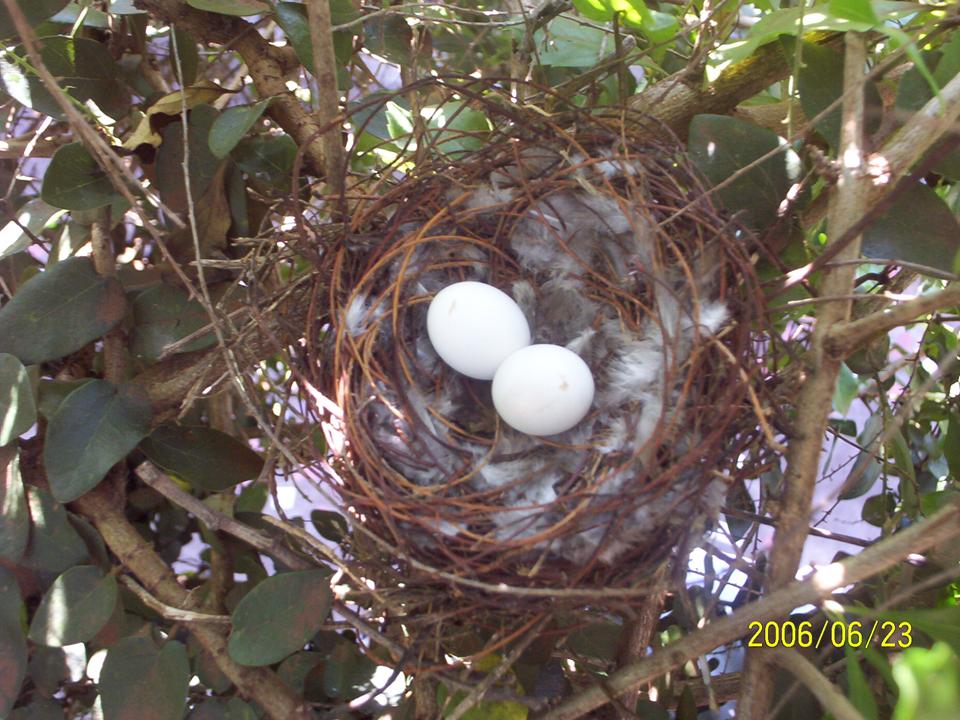
FIG 1: Nest on day prior to hatching of first brood 23 June 06 (Photo Paul Smith)
EVIDENCE OF DOUBLE-BROODING
On 7 June 2006 a male dove was seen carrying nesting material to a low bush (c3m total height) with dense, overhanging foliage. By the following afternoon a small cup was clearly visible from below. On 22 June 2006 two eggs were present in the nest, the first of which hatched on the morning of 24 June. The other egg failed to hatch. On the 12 August 2006 a single fully-fledged juvenile was present in the same nest along with another (presumably different) unhatched egg. It left the nest on the same day.
According to published information on incubation and fledging times the maximum elapsed time from laying to fledging is 26 days (11-13 days incubation; 12-13 days fledging Gibbs et al. 2001). Assuming that the maximum durations applied in each case the first fledgling would be expected to have left the nest on or around 7 July, whilst the second fledgling would have hatched from an egg laid
on 17 July, leaving a window of 10 days during which no eggs or chicks were present in the nest.
The fact that these broods were raised in the same nest outside of the usual breeding season in Paraguay (approximately late September to February) is strong circumstantial evidence of year-round breeding and probable multiple brooding at least when climactic conditions are conducive to reproduction. A closely-related species, the Ruddy Ground-dove Columbina talpacoti, has been recorded to complete 7 reproductive cycles in a 12 month period in Brasília, Brazil (Couto 1985). Sick (1993) noted that that species may use the same nest for consecutive clutches.
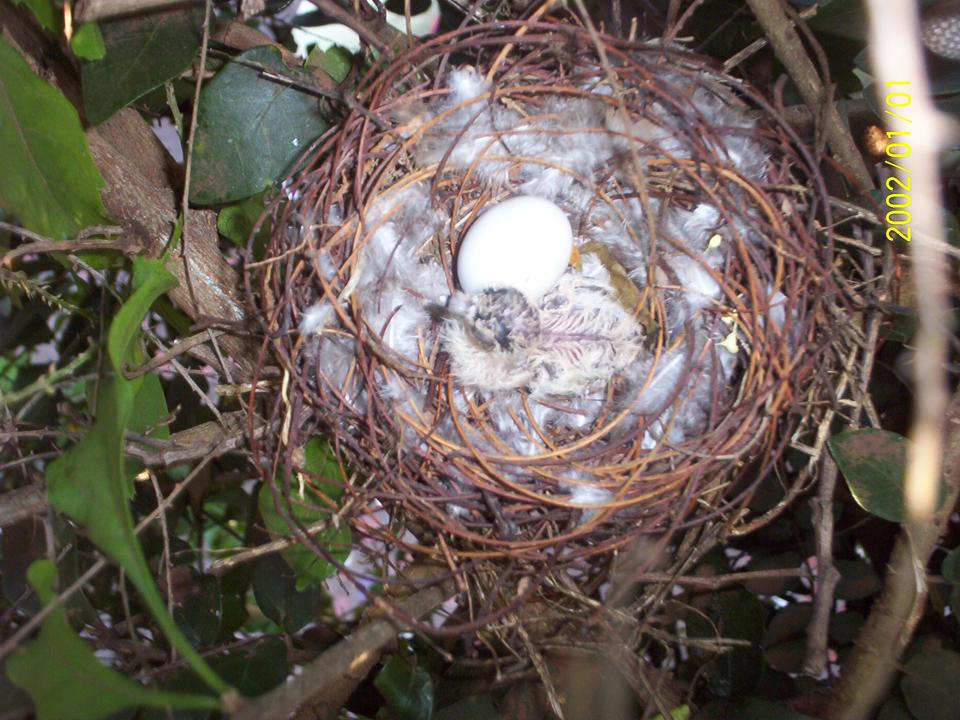
FIG 2: Nest on day 1 after hatching of first brood 24 June 06 (Photo Paul Smith)
NEST
The nest was constructed of thin (c1mm), dry, reddish-coloured petioles of the compound, bipinnate leaves of a chivato tree Delonix regia woven into a neat, rounded cup. The chivato was located approximately 20m from the nest site and the ground around it was littered with the dry petioles used in the nest construction. Only the male was seen to collect nesting material (n=8 observations) and appeared to build the cup without assistance from his mate.
The nest was located on a branch c2m high in dense foliage, wedged in a tangle of vegetation supported largely by two branches of c8mm in diameter and lined with whitish feathers consistent with the downy feathers of the breast of adults. Its dimensions were - diameter
82mm, depth 36mm, cup diameter 62.5mm. Its form and measurements were consistent with published descriptions of nests of this species from Argentina (de la Peña 1987), but the timing of breeding - during the Paraguayan midwinter - does not correspond to any published dates for the species at this latitude.
Chicks defecated at the rim of the nest, which rapidly became encrusted with dung. Sick (1993) suggests that a lack of hygiene in flimsy columbid nests may be advantageous in providing the platform with greater stability. In this case the nest was firmly wedged and had survived days of high winds and storms even before the hatching of the first eggs.
EGGS
Two pure white ovoid eggs were laid in each clutch, and on both occasions only one egg hatched. The eggs from the first clutch measured 23 x 18mm and 21.5 x 17mm, and the unhatched egg from the second clutch measured 22 x 17mm. All dimensions are within the normal range given for the species in Argentina (de la Peña 1987). The unhatched egg from the second clutch contained a dead but near fully-developed embryo when it was opened on 14 August, two days after the successful departure of its sibling.
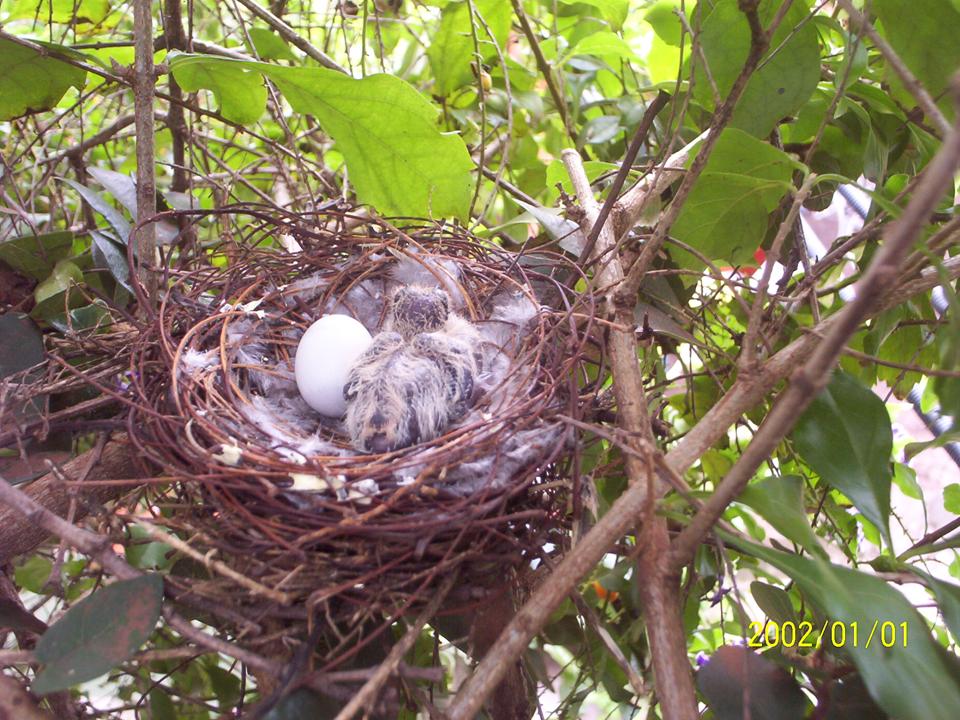
FIG 3: Nest on day 3 after hatching of first brood 26 June 06 (Photo Paul Smith).
INCUBATION
The eggs were incubated by both sexes. During nest changeovers the arriving dove approached the nest from below, perching quietly on a thick branch (c70mm diameter) some 40cm below the nest. The sitting bird flew directly from the nest without interacting with the arriving bird. The arriving bird then clambered slowly and quietly up through tangled vegetation to take over the task of incubation, accommodating the eggs with the bill and settling with a shake of the body.
Incubating birds were clearly visible from the side, sitting motionless and maintaining a crouched posture with head low. The tail overhung the rim of the nest and was visible from below. When approached the sitting bird remains still until the observer is within c1m of the nest, erupting suddenly and rapidly from
the nest with loud wing-flapping and crashing of branches. This sudden noisy departure may act to distract predators, providing protection for the nest.
CHICK DEVELOPMENT
Chick development of the first clutch was documented from hatching on 24 June until 30 June, with no further observations possible after that time. During the 6 days of observations the chick grew rapidly, though we were unable to take any morphometric data during that period.
On hatching chicks are covered in a sparse, yellowish-white down and the eyes are closed. They are able to sit upright from day one. By day 4 the eyes are open, though chicks spend the majority of the day with eyes closed (presumably sleeping). They respond to gentle rocking of the nest by crouching
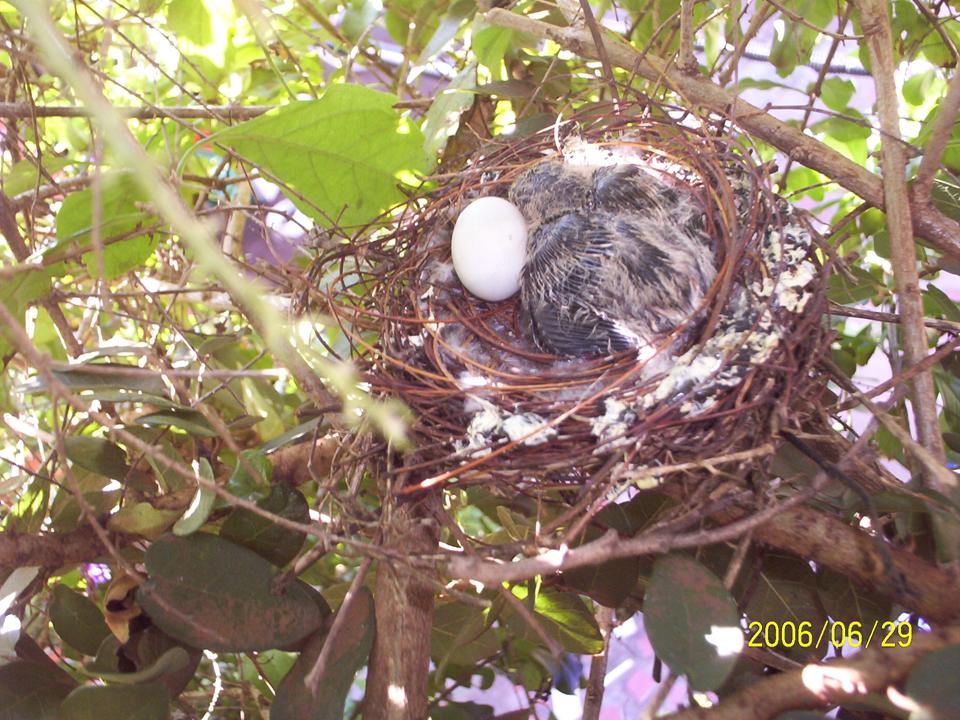
FIG 4: Nest on day 6 after hatching of first brood 29 June 06 (Photo Paul Smith)
motionless with closed eyes. Sheathed primaries were visible on a four day-old chick. By day five the chick almost filled the nest but was still mostly covered with down. Pin feathers were present on all the major tracts by day 6, including the caudal, alar, crural, spinal and ventral tracts. On August 12 the fully-fledged juvenile from the second brood resembled adult birds but was somewhat duller and browner above, with faint paler scaling on the feathers of the back and upperwing. The supraloral area and ear-coverts were pale whitish, giving a distinct facial pattern. The fledgling was notably smaller and more lightweight than adult birds with a distinctly shorter tail. There was no hint of the “reddish-buff or buff-centres” to feathers of the “wing-coverts or breast” as described by Gibbs et al. (2001)
LEAVING THE NEST
On 12 August the fledgling from the second brood was seen leaving the nest. At approximately 5pm both parents flew to a low perch c1.5m from the nest and began to call a deep h-woooo. After several minutes of calling, one of the birds (usually the male) flew to another perch c5m from the nest (and close to where the birds habitually roosted when not breeding) from where it continued to call - apparently imploring the fledgling to follow. It was followed soon after by the other parent. Whilst there was no response from the fledgling the performance was repeated, and the pair alternated between the two branches a total of 4 times.
At 5.20pm, and whilst the parents were calling from the c5m perch, the fledgling emerged with a clumsy, weak, fluttery flight and landed on the floor c2m from the perch occupied by the parents. The parents responded by flying towards it, continuing to call. The fledgling remained on the ground for several minutes before attempting another clumsy flight to a perch c3m further away, again accompanied by the parents. On approach it fluttered frantically and clawed at the perch for several seconds, but failed to gain enough height to land successfully and collapsed to the floor. It remained on the ground until shortly after darkness fell, by which time the parents had ceased to call. When approached by a human observer it flushed up again to a low bush c1m high - for the first time failing to elicit an “accompaniment” response by the parent birds. By late the morning of 17 August the fledgling was still to be found within 15m of the nest and was being regularly attended by the parent birds, having survived almost 36 hours of torrential rain storms in the days prior. Sick (1993) notes that small doves often fall victim to storms. The fledgling was present only intermittently in the area on 18 August, six days after leaving the nest and could not be located at all in the days after that.
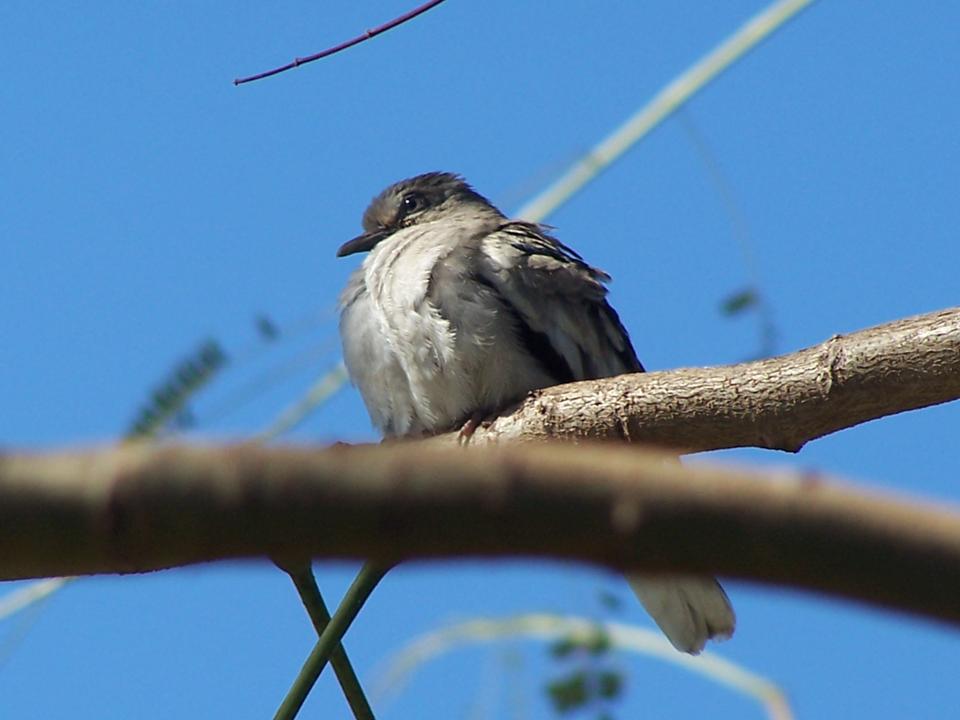
FIG 5: Recently fledged juvenile 17 August 06 (Photo Paul Smith)
PARENTAL CARE OUTISDE THE NEST
The fledgling was fed by both parents. During two hours of observations on the morning of 17 August it was fed four times, three times by the female and once by the male. Adult birds approaching to feed the fledgling adopted a prominent perch and gave a series of 6-8 h-woooo notes (n=8). If there was no response from the juvenile the adult moved to a higher perch and continued to call until the fledgling appeared. The fledgling solicited feeding by pecking at the crop and bill, and forcefully positioning the head close to the bill of the parent bird, whilst simultaneously placing one wing around the body of adult in a “hugging” motion. When the adult was ready to regurgitate the fledgling inserted its bill within that of the adult, both birds bobbing the head as the crop milk is released. On most occasions the bobbing was vertical but
occasionally some horizontal or circular motions were involved. Birds bobbed a mean of 9 times during a single feeding (range=6-14; n=6). During each visit the fledgling was fed a mean of 3 times (Range=2-6; mode=2; n=4) before the departure of the adult. Upon completion of feeding the adult departed to and called from a nearby perch, sometimes being followed by the fledgling, although no further feeding was seen to occur.
INTERSPECIFIC INTERACTION
The juvenile Picui Ground-dove was seen to interact with a juvenile Eared Dove Zenaida auriculata on two occasions on the morning of 17 August. The Eared Dove is a larger species but otherwise posed no threat. On the first occasion the approach of the larger bird resulted in the ground-dove taking flight from a low perch to avoid it. On the second occasion the Eared Dove approached the ground-dove whilst the two birds were on the ground. The smaller bird responded by raising the wing furthest from the dove. Sick (1993) states that the congeneric Ruddy Ground-dove raises the wing nearest to an approaching bird when it considers it a weak opponent, whilst the raising of the far wing is a submissive response to the approach of a stronger adversary.
CONCLUSION
This is the first documented record of probable double-brooding in Picui Ground-dove in Paraguay. The two nesting attempts followed so closely after each other that there is a strong probability that multiple further nesting attempts will be made by the same pair during the rest of 2006. Multiple-brooding appears to be a not uncommon phenomenon in tropical columbids - the presence of the fledgling Eared Dove also hints at year-round breeding in that species. It is notable that our observations were in the south of the country where winter temperatures are most extreme and perhaps where winter breeding would be least expected to occur if seasonality was indeed the norm.
The fact that only one egg hatched on both occasions may be a result of suboptimal conditions restricting brood size. During the traditional “breeding season” when food resources might be assumed to be more abundant, adult Picui Ground-doves are often seen feeding two young (PS pers. obs.)
Picui Ground-dove reaches such levels of abundance in Paraguay that numbers would seem unsustainable given the small clutch size and only a single brood per year. Predation pressure is high and the species is hunted locally. The indigenous people of the High Chaco hunt small doves at the edge of watering holes, using a long piece of wire cut from a fence that is spun like a skipping rope, taking out “tens of birds at a time” as flocks come to drink (Mario Torales pers.comm.).
The strong circumstantial evidence presented here suggests that year-round breeding and probable multiple broods are typical of the species in Paraguay, though further studies with marked birds are desirable.
REFERENCES
1.Bird DM 2004 The Bird Almanac: A Guide to Essential Facts and Figures of the World´s Birds Firefly Books, Canada.
2.Couto EA 1985 O Efeito da Sazonalidade na População da Rolinha Columbina talpacoti no Distrito Federal Thesis Tese Inst. Ciencias Biologicas Univ. de Brasília.
3.del Castillo H 2006 Atlas de las Aves del Paraguay Guyra Paraguay, Asunción.
4.del Hoyo J, Elliott A, Sargatal J eds. 1998 Handbook of the Birds of the World Vol 4: Sandgrouse to Cuckoos Lynx Edicones, Barcelona.
5.de la Peña MR 1987 Nidos y Huevos de Aves Argentinas published by author, Santa Fé.
6.Hudson GE 1975 Aves del Plata Libros Hispanoamérica, Buenos Aires.
7.Sick H 1993 Birds in Brazil Princeton University Press, New Jersey.
8.Smith P, Clay RP in press Field Guide to the Birds of Paraguay Christopher Helm, London.
9.Wetmore A 1926 Observations on the Birds of Argentina, Paraguay, Uruguay and Chile Smithsonian Institution United States National Museum Bulletin 133, Washington.
Designed by Paul Smith 2006. This website is copyrighted by law.
Material contained herewith may not be used without the prior written permission of FAUNA Paraguay.
Photographs on this web-site were taken by Paul Smith, Hemme Batjes, Regis Nossent,
Alberto Esquivel, Arne Lesterhuis, José Luis Cartes, Rebecca Zarza and Hugo del Castillo and are used with their permission.






